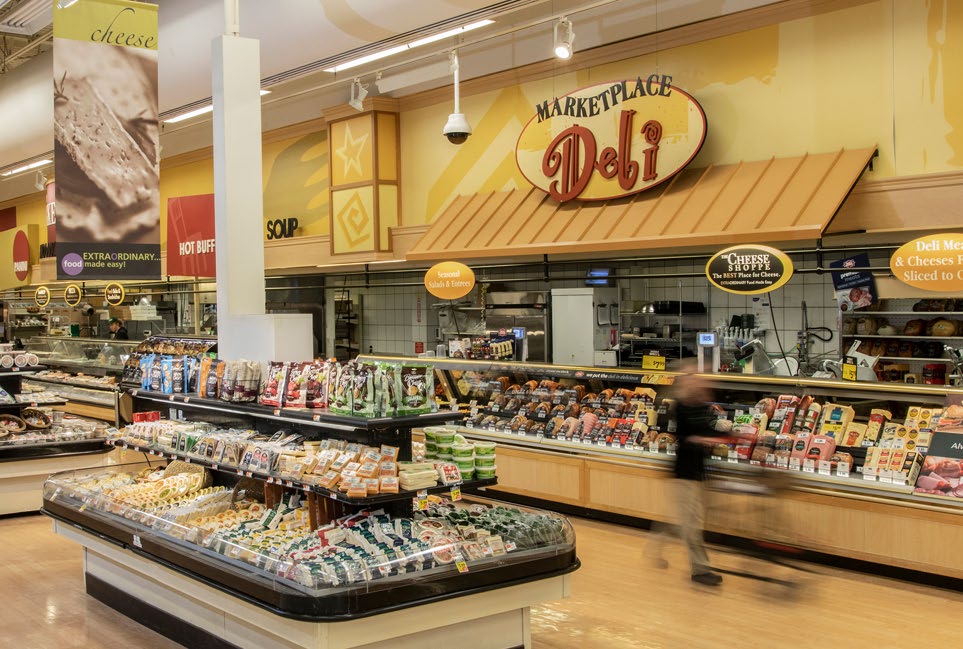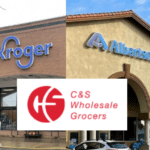
Federal regulators and at least two states have expressed great skepticism that Kroger and Albertsons’ plan to divest more than 400 stores to clear the way for their proposed merger will actually work. So Kroger and Albertsons are trying to calm those concerns – by selling even more stores.
The two grocers now plan to sell 579 stores to C&S Wholesale Grocers, up from a previously-announced 413. Specific locations were not provided, but aside from Kroger-owned stores in Washington state, Oregon, Illinois and the DC area, the vast majority of the locations designated to change hands are Albertsons-owned stores in 15 states, almost all west of the Mississippi. They include significantly more stores in Colorado, Arizona, Oregon, Washington state and Illinois than in the original plan.
And in an ignominious irony for a grocery chain that barely survived an earlier botched merger-and-divestiture plan, the new proposal now calls for the Haggen name to be sold off as well.
Kroger and Albertsons say the new plan “responds to concerns raised by federal and state antitrust regulators regarding the original agreement.” In a statement laying out the new proposal, the retailers said the plan includes increased infrastructure, distribution capacity and transition support services “to ensure C&S can continue to operate the divested stores competitively and cohesively.”
But it’s unclear the new plan will alleviate the concerns of federal and state regulators, when they have objected to the very idea of selling hundreds of stores to C&S in the first place.
When Kroger and Albertsons announced their plans to combine a year and a half ago, they said they would sell up to 375 stores in an effort to eliminate overlap, preserve competition, and ensure that no stores would close as a result of their merger. That number was upped to 413 last September when the retailers revealed C&S would be the buyer.
But C&S currently owns very few grocery stores, and has a history of disinterest in owning any more. So adding 166 more stores to the transaction may not solve the apparent problem so much as it compounds it.
When Washington state’s Attorney General sued back in January to block the proposed Kroger-Albertsons merger, his lawsuit reserved particular scorn for the C&S aspect of the deal. Calling the divestiture plan “woefully inadequate,” the lawsuit pointed out that C&S has “no track record of successfully running hundreds of grocery stores” and is therefore “not a sufficiently established and sophisticated competitor.”
When Colorado’s Attorney General sued a month later, his criticism of the deal with C&S was even more withering. “This proposed ‘fix’ does not fix anything,” his lawsuit argued. “C&S is not well situated to be a viable competitor because of its complete lack of experience as a national-scale retailer, lack of any experience in Colorado, and its lack of the infrastructure needed” to successfully operate the original owners’ “worst performing and least desirable stores” that they’ve decided to unload onto an unsuspecting buyer. C&S itself “also has a troubling track record,” the lawsuit continued, noting that C&S has “previously bought retail stores only to eventually sell them off.”
And the most crushing criticism came from the Federal Trade Commission, which filed its own lawsuit to challenge the merger two weeks later. “C&S — a wholesaler with limited supermarket operating experience — is a poor choice for a divestiture buyer and increases the likelihood that the divested stores will flounder or fail,” the FTC argued. The “inadequate divestiture proposal is a hodgepodge of unconnected stores, banners, brands, and other assets that Kroger’s antitrust lawyers have cobbled together,” leaving C&S to face “significant obstacles stitching together the various parts and pieces from Kroger and Albertsons into a functioning business — let alone a successful competitor.”
So surely, selling even more stores to C&S will solve those problems!
What Kroger and Albertsons appear to be referring to in saying the new divestiture plan “responds to concerns” raised by the various challenges, are accusations that the original plan still left too many Kroger and Albertsons locations too close to each other, dominating too many markets, unless more stores were sold. But the new plan does little to address concerns about C&S itself, aside from claiming that including more stores and more support services would “further enable C&S to operate competitively following the completion of the proposed merger.”
As for Haggen, its inclusion in the revised plan is a cruel twist of fate for a grocer that was once in a similar position to C&S nearly a decade ago. The original divestiture plan called for transferring the Kroger-owned QFC and Mariano’s, and Albertsons-owned Carrs, brand names to C&S. The revised plan throws in Albertsons-owned Haggen as well.
Back in 2014, Albertsons was required to divest 168 stores before it could complete its purchase of Safeway. It sold most of those stores to Haggen, which suddenly grew from a small, regional chain with only 18 stores to a major multi-state operator with nearly 200 stores. It failed within a year, filing for bankruptcy, selling back most of the acquired stores to Albertsons, and then selling itself to Albertsons, with its tail between its legs.
The Washington-state-based Haggen featured prominently in Washington state’s lawsuit challenging the Kroger-Albertsons merger, which said the divestiture plan bore “a striking resemblance” to the one involving Haggen a decade ago. “Washington consumers and workers should not be forced to take a gamble on another risky supermarket divestiture,” the lawsuit argued.
So while Kroger and Albertsons hope their new divestiture proposal will bring some certainty to their merger plans, it ends up adding more uncertainty to the fate of the 579 stores to be sold. Will C&S succeed in operating them all? Will it flip some or most of them to new owners? Will any of them end up closing? Or might Kroger and Albertsons end up buying them back, negating the entire divestiture, just like what happened to Haggen?
To Kroger and Albertsons, the new plan is a solution. To critics who are against the merger, the proposed solution may turn out to be an even bigger problem.
Image source: C&S Wholesale Grocers










